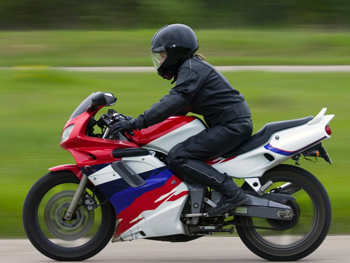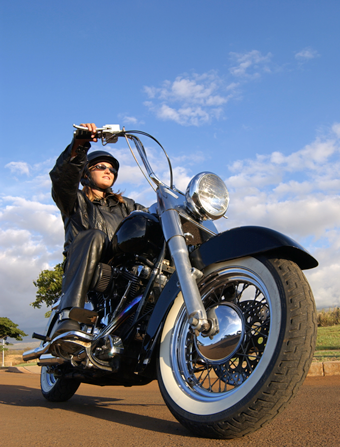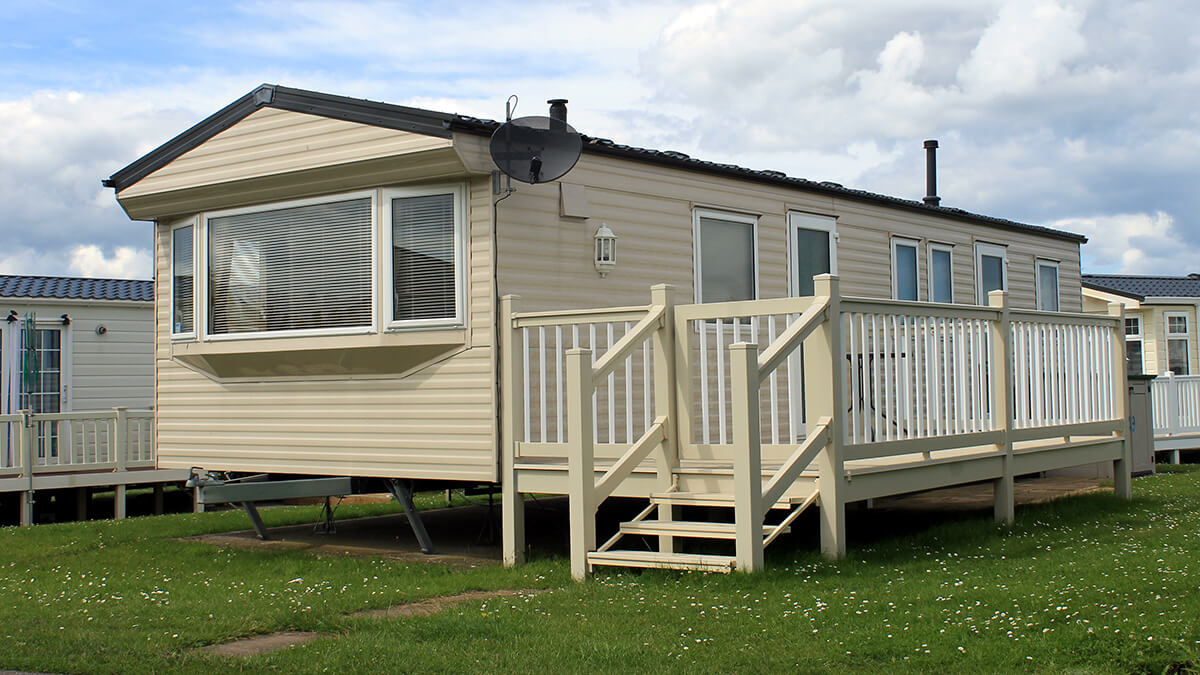Motorcycle riding: Avoiding hazards on the road

Whether you're a novice or a skilled motorcycle operator, there are going to be times when hazards on the road test your handling abilities. The best defense you have is the ability to react quickly and calmly to the hazards that appear in your path. Use our motorcycle riding safety tips below.
Before you go out riding, watch your local weather forecast. If there is a possibility of rain, snow, strong winds or other potentially dangerous weather on the way, you may want to leave your motorcycle parked where it is and choose a more appropriate method of transportation. But you can't always predict the weather, and there is always the possibility you could get caught in dangerous driving conditions.
Depending on the specific hazard or road conditions, there are some things you can do - and can practice beforehand - to ensure that you know how to react when these conditions arise. Depending on whether you're riding in slick conditions like rain, snow or wet leaves or trying to avoid hazards in the road such as potholes, debris or uneven pavement, here are a few motorcycle riding safety tips that could help you react in ways that will, keep you and your bike safe.
When Surfaces are Slick
There are several conditions that could cause a riding surface to become slippery and require you to react quickly. Some of these elements are liquids (such as oil spots) on the road, rain, wet leaves, sand, gravel, and snow and ice. Regardless of the cause of the slippery surface, here are some tips that might help you maneuver through these less-than-ideal conditions:
- Reduce your speed - A slippery surface will result in a longer stopping time. Slow down and pay close attention to changes in the driving surface.
- Use both brakes - Your front brake is responsible for three-quarters of your braking ability. Apply the front brake slowly and consistently without locking the wheel. Apply the rear brake in the same manner. Try not to brake mid-corner and remember the risk of sliding increases with acceleration.
- Avoid sudden moves - On a slippery surface, sudden movements will be exaggerated and could cause you to lose balance. Gradual, deliberate movements will help keep the bike steady and help you avoid skidding.
- Try to avoid the slickest areas - The center of the lane and intersections are where oil and other slippery substances tend to build up. To avoid these areas, ride where you're most likely to be seen AND avoid the hazard. Try to avoid the sides of the road where dirt, gravel and snow collect and cause low-traction conditions.
When Strong Winds Blow
Strong winds can catch you off-guard and throw you off balance when you're on a motorcycle ride. Opposed to other weather hazards, you can't see it coming. Be aware of weather conditions before you ride and take extra precautions when winds are extreme. Look ahead on the path you're riding and try to determine where the wind is going to catch you so you can plan for it. Some areas to watch out for include bridges, gaps between buildings and trees, open roads, coastal areas and gusts as large trucks pass. Try and figure out which way the wind is going to blow you and then do the following:
- Ride on the side of the lane that gives you the most room to maneuver.
- Keep your distance from other cars as well as the side and centerline of the road.
- Practice good posture. A good grip on the handle bars, a firm planting of your feet on the pegs and keeping your arms and shoulders flexible will help you maintain control and balance.
- Steer into the wind as much as possible. In addition, it's extremely important in windy conditions to be aware of debris such as branches that have blown into your path.
When Debris or Hazards Appear in Your Path

There are many times that hazards such as potholes, branches or items in the road might appear seemingly out of nowhere. It is very important that you practice avoiding hazards, and are able to react quickly and calmly when they do appear.
Often, you will need to make a quick turn to avoid the object or hazard. To do this, you should lean quickly in the direction you want to turn and press on the inside of the hand grip on the same side. This will cause the front wheel to move slightly in the opposite direction while still allowing the bike to move straight ahead to avoid the object without losing balance or throwing the bike too far off course.
If you have to ride over an object, it is important that you:
- Hold onto the hand grips tightly.
- Keep a straight course.
- Rise up slightly on the foot pegs to absorb the shock.
Once you have driven over an object or hazard in the road, it's a good idea to pull over and inspect your bike and tires for any damage.
The same advice holds true when dealing with uneven surfaces like potholes, broken pavement or railroad tracks:
- Slow down.
- Hold onto the hand grips tightly.
- Keep a straight course.
- Rise up slightly on the foot pegs to absorb the shock.
- Try to cross the uneven surface at an angle.
SEE

The Motorcycle Safety Foundation has developed this proactive defense-driving tool as an easy way to recall what steps you should take if a hazard crosses your path while you're riding your motorcycle. Keep “SEE” in mind when you're out riding as a good first step in deciding what you need to do.
S - Search around you for potential hazards. Look ahead, to the sides, in your mirrors and even over your shoulder.
E - Evaluate any possible hazards or dangers such as an oncoming car making a left turn, a driver speeding up behind you or a car waiting to pull onto the road.
E - Execute the action needed to avoid the hazard such as braking or turning.
If you take the steps to identify and react quickly and calmly to the hazards that you could face on the road, you are in a much better position to come out of a potentially dangerous situation unscathed. Nothing can take the place of practice when you're riding a motorcycle, so it's a good idea to spend some time trying to avoid obstacles or potential hazards in a safe environment. Take a Motorcycle Safety Course to prepare yourself for what you could face.
Motorcycle Insurance
In addition to doing what you can to protect your motorcycle and yourself from potential hazards out on the road, it's important that you have the right motorcycle insurance. You need an insurance policy that offers the coverages that are important to your specific bike and lifestyle. Take a look at our coverage options on our motorcycle insurance page, or get a quote.
Important things to look for when choosing a specialized motorcycle insurance policy:
- Safety Apparel Coverage to protect your investment in helmets, leathers, gloves and any other clothing designed to minimize injury in the event of an accident.
- Optional Equipment Coverage for chroming, custom painting, side cars or anything else that was not included as standard by the manufacturer.
- Optional Towing and Roadside Assistance in case your bikes breaks down and can't be ridden when you're away from home because you run out of gas, get a flat, or have other mechanical issues.
- Optional Replacement Cost Coverage on bikes purchased new and insured within 30 days.
- Flexible payment plans so you can choose the plan that best fits your budget.
- Deductible and coverage limit options.
- Premium discounts.


